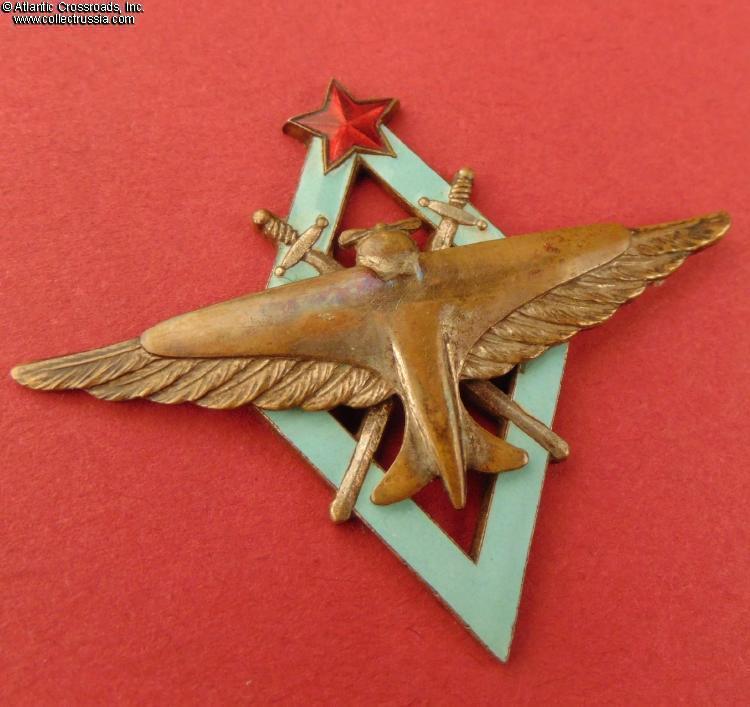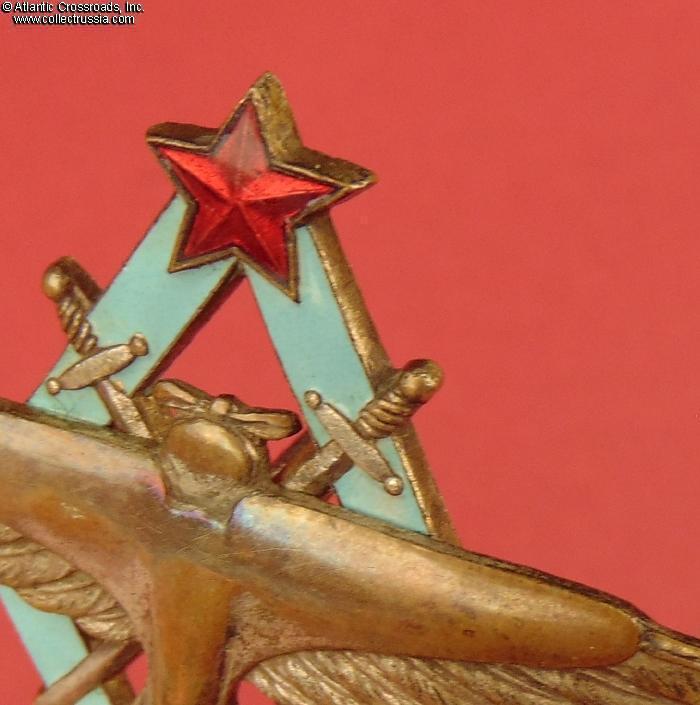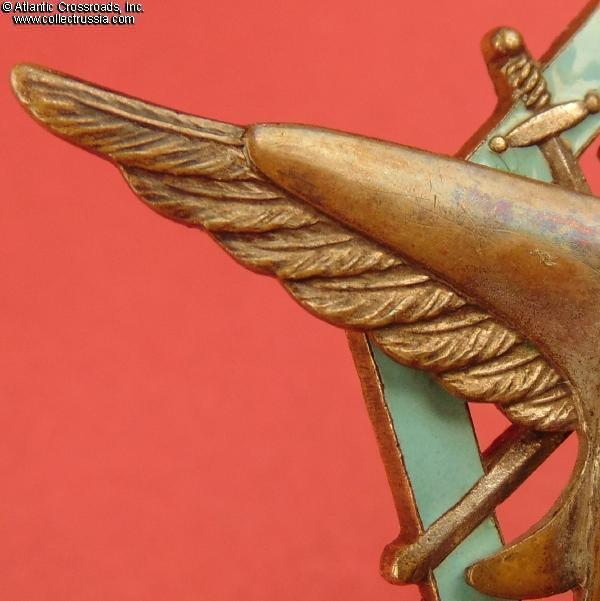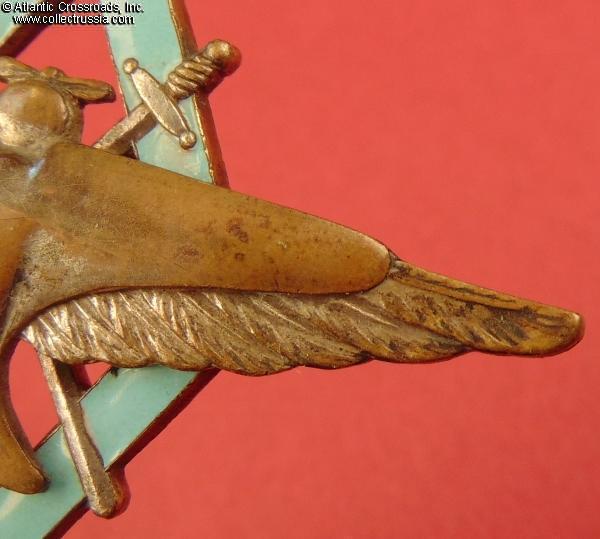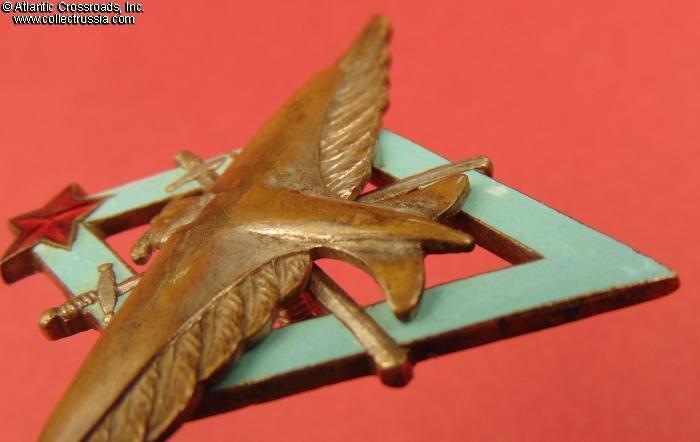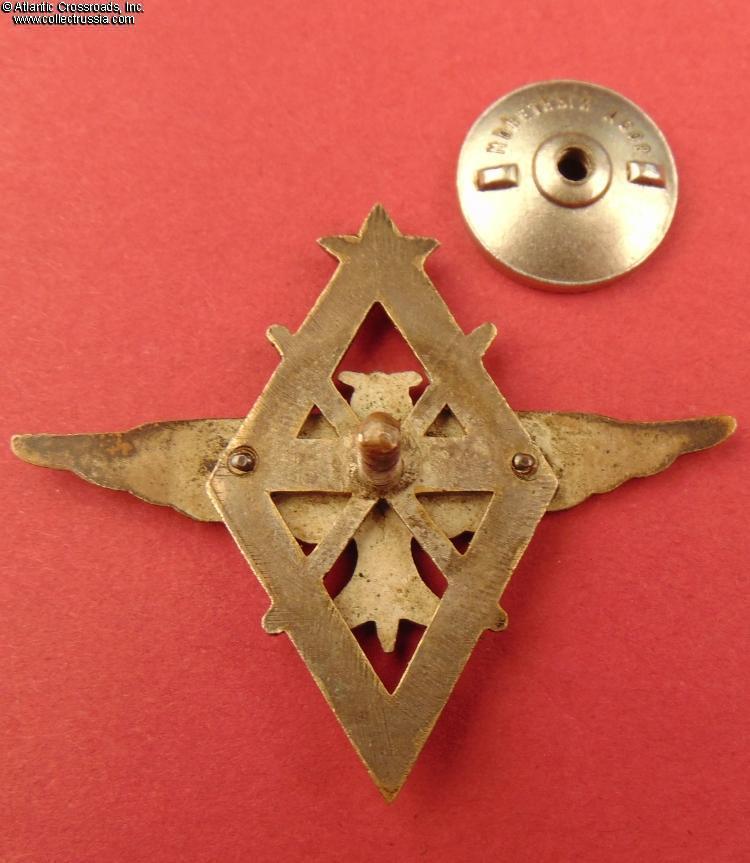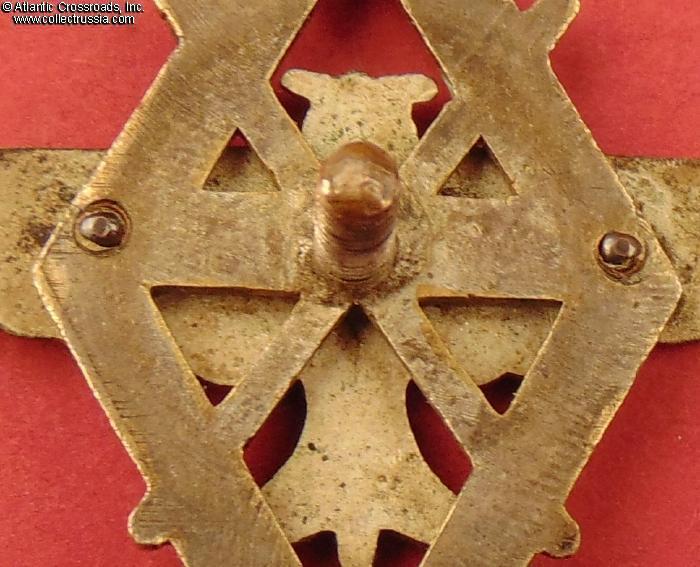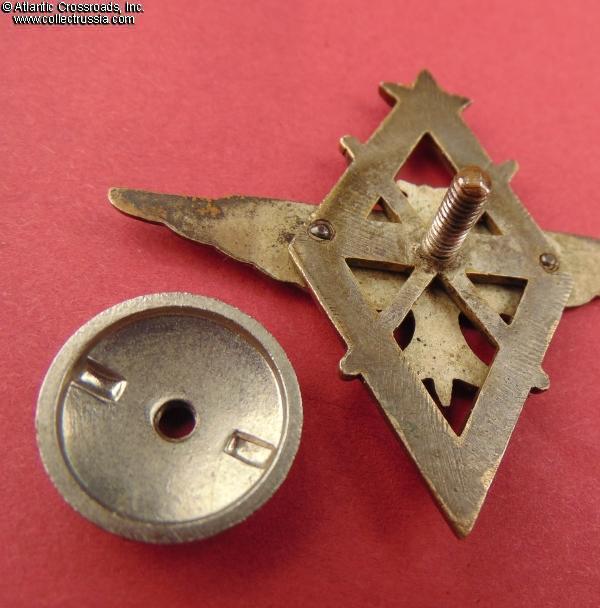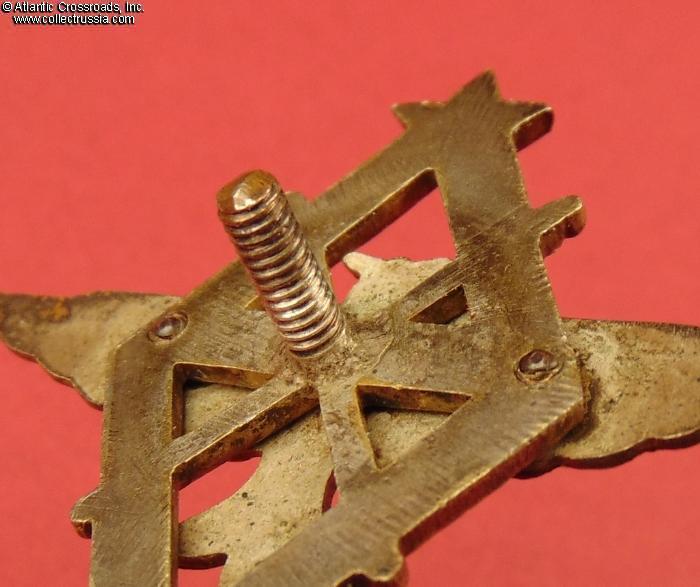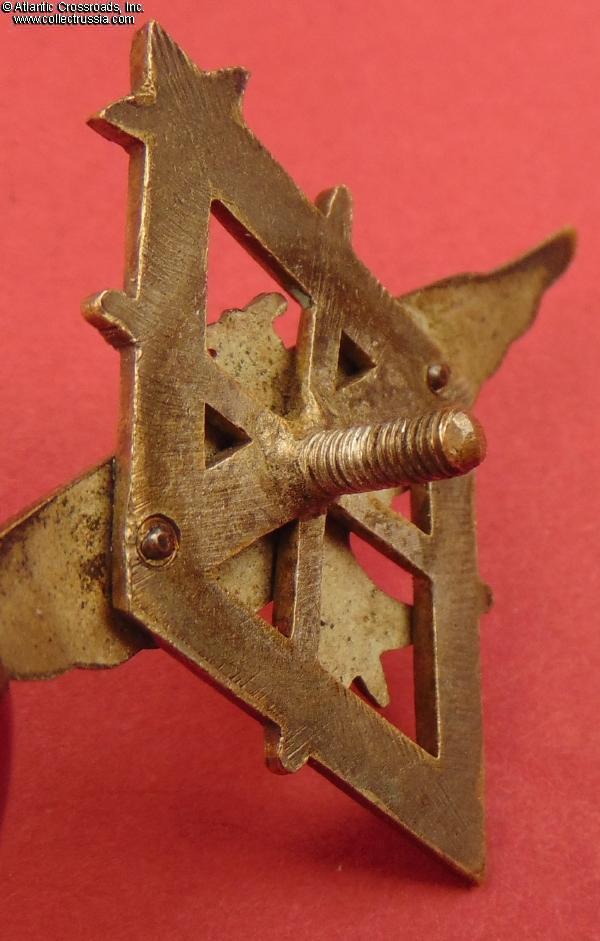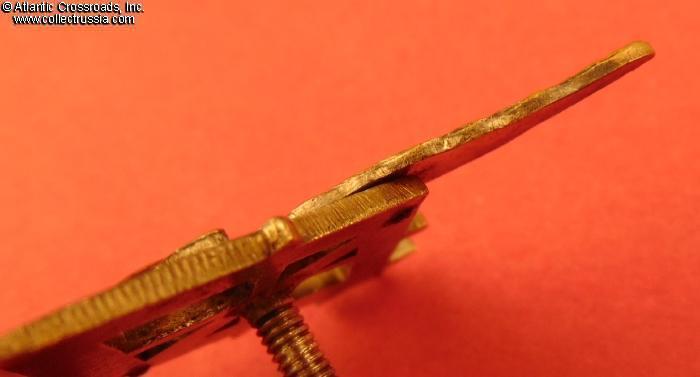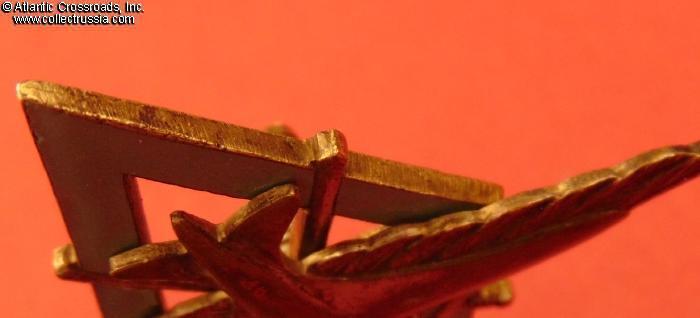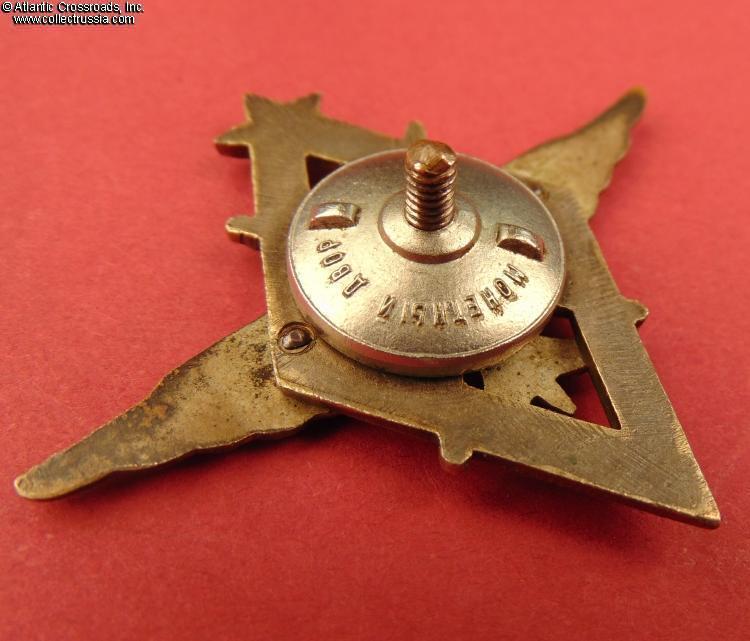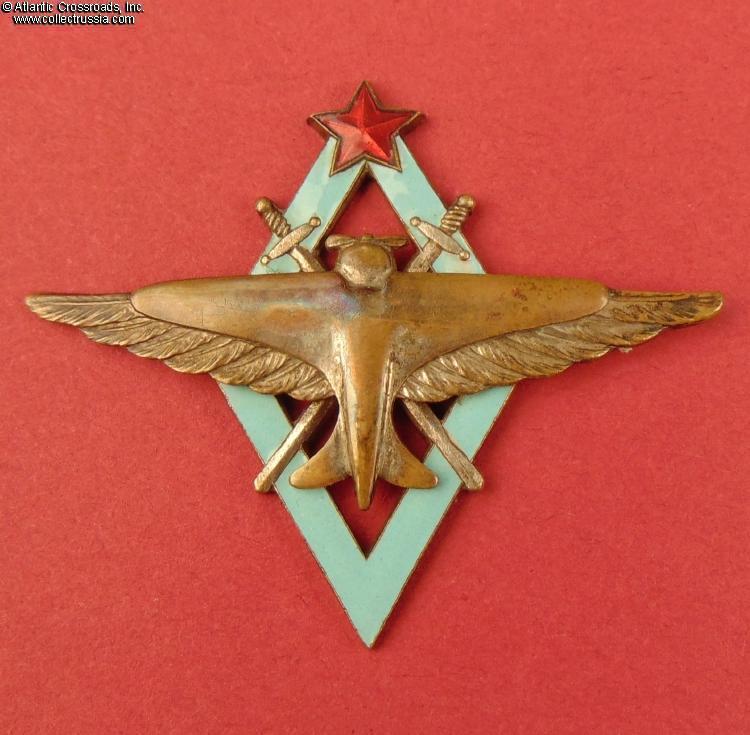
Military Aviators School Graduate badge, 1940-41 issue.
Brass, silver plating, enamels; measures 45.2 mm in height, 54.7 mm in width; the width of the diamond-shaped base portion is 26.1 mm; weighs 11.3 g without the screw plate. Riveted two-piece construction: the I-16 fighter with bird wings underneath is a separate part superimposed on the diamond base.
In excellent condition, extraordinary for this badge. The enamel on both the diamond and star is literally perfect, free of any wear visible even under a 10x magnification. The details of the artwork are likewise perfect. There is wear to the silver plating on the raised porti
Brass, silver plating, enamels; measures 45.2 mm in height, 54.7 mm in width; the width of the diamond-shaped base portion is 26.1 mm; weighs 11.3 g without the screw plate. Riveted two-piece construction: the I-16 fighter with bird wings underneath is a separate part superimposed on the diamond base.
In excellent condition, extraordinary for this badge. The enamel on both the diamond and star is literally perfect, free of any wear visible even under a 10x magnification. The details of the artwork are likewise perfect. There is wear to the silver plating on the raised portions of the airplane, revealing brass which has acquired a very attractive even patina; at the same time, the silver finish on the bird wings, swords and the reverse of the badge is largely intact.
The rivets are perfectly tight. The screw post is full length, over 10 mm, and includes an original mint-marked screw plate in nickel-plated steel.
The badge was a part of the "streamlined" 1938 series of AF school graduate badges that replaced the earlier, serial-numbered badges of 1936 type. According to the Badges of the Soviet Armed Forces by Borisov, the actual production of the 1938 model started at the Leningrad Mint only in 1940 and wrapped up in July 1941, soon after the German invasion of the USSR.
It must be said that some of the pilot schools were known in Russian as Военное авиационное училище летчиков (Voennoe aviatsionnoye uchilishche letchikov) and the others as Военная авиационная школа пилотов (Voennaya aviatsionnaya shkola pilotov). This is sure to create some confusion, as both terms appear to have the same exact meaning. However, the latter type of school (shkola in Russian) provided only a brief basic training in response to the sharply increased demand for combat pilots. The former (uchilishche) offered a far more in-depth college-level program; in at least the initial period of WW2, such schools were less numerous than the shkola-level establishments by about an order of magnitude. For simplicity's sake, we translate the former as Military Aviators School, and the latter as Air Force Pilots School. The M 1938 graduation badges for the two types of schools were also different, reflecting different levels of training: one with the bird wings and the other one without, for the higher-level and lower-level schools, respectively. For obvious reasons, the "bird wings" Military Aviators School graduation badge is far more scarce than its lower-level counterpart and especially rare to find in excellent condition. The example offered here is by far the best we have handled in at least 15 years.
/Avers 8 p. 477, fig. 2252a; Borisov, Badges of the Soviet Armed Forces, 1918 - 1991 , fig. 302/
$1,450.00 Add to cart

